Oxford University Press's Blog, page 429
December 13, 2016
Spectacular science in the shadows of New York
New York is a world center of commerce and finance, media and transportation, and many other facets of modern life. It is also a great hub of science, but this seldom transpires when New York is mentioned. Yet science, especially when including technology, inventions, medicine, learning, and related activities, is omnipresent in our lives regardless whether or not we are scientists.
New York has world-renowned universities, a museum of natural history along with a host of other museums, a science academy, historical societies, botanical gardens and zoos, rich libraries, and a hall of science. New York has been home to some of the most outstanding scientists and discoverers of the world. Just considering the Nobel Prize, there may be few countries that could boast so many prize-winners as New York by itself.
The Nobel Prize is, of course, only one of many indicators of success in science and there is no Nobel Prize in many important fields of science. Also, several countries, cities, and institutions may claim any Nobel Prize simultaneously as their own. However, this recognition is so widely known that its mention carries a weighty message about the level of science in any country, city, or institution. Many great American scientists had arrived already being established, or even having earned a Nobel Prize elsewhere. The United States, and New York itself, has attracted scientists escaping life-threatening persecution or scientists merely looking for better work conditions.
However, it would be unfair to ascribe the success of American science primarily to imported talent. Much of the American preeminence stems from developing outstanding researchers and giving them independence at an earlier age than in most other parts of the world. A number of New York high schools provide convincing examples for the success in cultivating home-grown talent. Ten of these high schools have graduated a total of 39 future Nobel laureates.
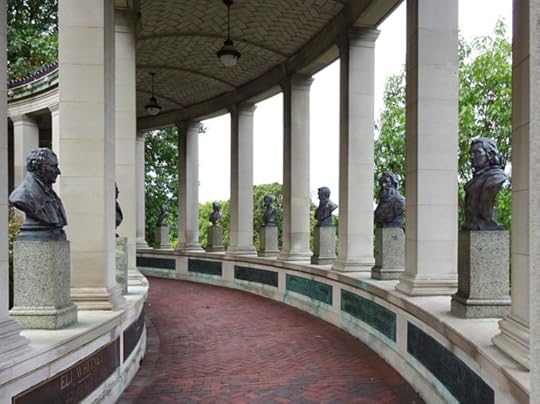 Part of the Hall of Fame of Great Americans in southern Bronx. On the left, there is the bust of Eli Whitney (by Chester A. Beach, 1926), the inventor of the cotton gin, to separate cotton fibers from their seeds. On the right, from the right, the busts of John James Audubon (by A. Stirling Calder, 1927), naturalist, ornithologist, and painter; Samuel F. B. Morse, inventor of the forerunner of the telegraph and the Morse code, and painter; Asa Gray (by Chester A. Beach, 1925), botanist and strong supporter of Charles Darwin; James B. Eads (by Charles A. Grafly, 1924), engineer who opened the Mississippi River for ships; Maria Mitchell (by Emma F. Brigham), educator and the first American woman astronomer; and Louis Agassiz (by Anna Hyatt Huntington, 1928), Swiss-born naturalist with interest in ichthyology and geological history. (Photo by the authors and used with permission.)
Part of the Hall of Fame of Great Americans in southern Bronx. On the left, there is the bust of Eli Whitney (by Chester A. Beach, 1926), the inventor of the cotton gin, to separate cotton fibers from their seeds. On the right, from the right, the busts of John James Audubon (by A. Stirling Calder, 1927), naturalist, ornithologist, and painter; Samuel F. B. Morse, inventor of the forerunner of the telegraph and the Morse code, and painter; Asa Gray (by Chester A. Beach, 1925), botanist and strong supporter of Charles Darwin; James B. Eads (by Charles A. Grafly, 1924), engineer who opened the Mississippi River for ships; Maria Mitchell (by Emma F. Brigham), educator and the first American woman astronomer; and Louis Agassiz (by Anna Hyatt Huntington, 1928), Swiss-born naturalist with interest in ichthyology and geological history. (Photo by the authors and used with permission.)There are relatively few memorials honoring scientists in public places in New York and some of those that exist may not meet the eye easily. The Hall of Fame of Great Americans is at the northwest corner of the campus of the Bronx Community College. It displays 99 busts of which over 40 honors scientists, educators, inventors, explorers, and others belonging to a broadly interpreted realm of science. The rows of busts are in a beautiful setting and the colonnade is free of charge to visit yet each of the three times we went there in summer and fall 2015, we had the whole venue to ourselves.
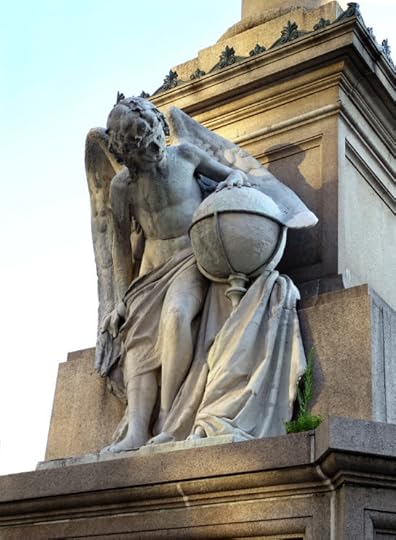 New York has been home to many seminal discoveries in science. The “Genius of Discovery” is an allegorical figure of a winged boy by Gaetano Russo, at the base of the Columbus Memorial on Columbus Circle. (Photo by the authors and used with permission.)
New York has been home to many seminal discoveries in science. The “Genius of Discovery” is an allegorical figure of a winged boy by Gaetano Russo, at the base of the Columbus Memorial on Columbus Circle. (Photo by the authors and used with permission.)
Clinical practice and clinical research are inseparable and Bellevue Hospital in Manhattan is a brilliant example of such unison. The hospital was founded in 1736 and over its history a number of medical innovators and discoverers spent their residency or long stretches of their careers at this hospital. When the Ebola scare reached the United States in fall 2014, a famous medical center in the country failed to provide proper care. In contrast, Bellevue Hospital served as an example of preparedness and performance in handling this deadly disease. The glass and steel exterior of the hospital is hardly distinguishable from many other buildings, but behind it, the unique façade of the old Bellevue is preserved.
Perhaps the single most important discovery in biology in the twentieth century was when Oswald Theodore Avery and his two younger associates determined that deoxyribonucleic acid, DNA, is the substance of heredity. The discovery opened the way to the development of today’s personalized medicine, and many of the anticipated discoveries in the coming years will originate from this discovery. There is a commemorative inscription within the gateway of the entrance to The Rockefeller University at the corner of York Avenue and 67th Street. Avery’s grateful friends and colleagues erected it in memory of the bacteriologist who was a member of the Faculty of The Rockefeller Institute (as it was then) between 1913 and 1948. Unfortunately, this gateway is kept locked and the people walking by notice nothing of the commemorative inscription.
Another example of how inconspicuous may be the memorabilia related to science in New York is from the West Village in Manhattan. One of the cornerstones of modern physics was the discovery of the dual—wave/particle— nature of matter. The French physicist Louis de Broglie showed this theoretically in 1923. Because it was counterintuitive, the experimental proof had special significance. It came about at Bell Labs in Manhattan when two physicists, Clinton J. Davisson and Lester H. Germer, shone a beam of electrons (particles) on a crystal and the scattering of electrons yielded a diffraction pattern (characteristic of waves). Bell Labs has since moved to New Jersey, but there is a memorial plaque at the entrance to 55 Bethune Street describing the event. Unfortunately the small plaque, positioned at knee height, is almost impossible to notice.
The Davisson-Germer discovery was a forerunner of further great discoveries of modern physics in New York, many of them by physicists at the Pupin Laboratories of Columbia University. In the post-World War II era, the Pupin Laboratories had an exceptionally high concentration of leading physicists under Isidor I. Rabi’s direction. One of the best known discoveries born at this venue was the laser with innumerable applications in the most diverse areas even in our everyday lives. Just as an example, the laser is used to repair a detached retina and thus help prevent blindness. When the physicists were investigating the simulated emission of light from atoms (the principle of laser) they had never heard of the condition of detached retina nor could they have imagined that one day their discovery in fundamental physics would be used in such health-related applications. In the entrance hall of Pupin Laboratories, there are some modest commemorative plaques honoring the glorious events that had happened within its walls.
Featured image: Brooklyn Bridge by the authors and used with permission.
The post Spectacular science in the shadows of New York appeared first on OUPblog.

Quotes of the year 2016 [quiz]
2016 has truly been a year to remember — from the amazing competition of the Rio Olympic Games to shock Brexit from Europe, and from environmental woes to the American presidential race. Famous faces have had no shortage of opinions on current events, with celebrities, athletes and politicians not being shy to express their views. But do you know your Berry from your Bieber, and your Corbyn from your Clinton? Which outraged celebrity, on being refused entry to a party retorted “How VIP do we gotta get?” and which politician, questioned on their self-confidence replied “I think I’m much more humble than you would understand.”
With 2016 coming to a close, we’ve gathered a selection of some of the year’s most memorable quotes to test your knowledge of current affairs. Do you know who said what?
Quiz Image Credit: Microphone, Boy, Studio by Unsplash. Public domain via
Pixabay
.
Featured Image Credit: Microphone stage event by goranmx. Public domain via Pixabay.
The post Quotes of the year 2016 [quiz] appeared first on OUPblog.

The Oxford Place of the Year 2016 is… Aleppo
 “Battle of Aleppo” Compilation by: Pereslavtsev, CC BY 2.0 via Wikimedia Commons.
“Battle of Aleppo” Compilation by: Pereslavtsev, CC BY 2.0 via Wikimedia Commons.The Twitter poll has closed and the results are in: our Place of the Year for 2016 is Aleppo. Aleppo lead the polls for longlist and shortlist consistently, and news from the city has dominated coverage of the Syrian Civil War in 2016. For the second year in a row, the Oxford Place of the Year is a place steeped in human tragedy and devastating loss. While Nepal, Place of the Year for 2015, coped with a natural disaster and diplomatic restrictions, Aleppo has come face-to-face with war.
Aleppo was once a metropolis of 2 million people, and the commercial center of Syria. It has since become a full-on war zone with entire city blocks destroyed and left in ruins. Though the Syrian Civil War has been going on since 2011, Aleppo was the major point of conflict in 2016. The rebels, as in those fighting against President Bashar al-Assad’s regime and for political freedom and civil liberties, were in control of much of Aleppo at the start of the year. al-Assad’s regime launched an air-strike and ground campaign in June of 2016, with help from Russia. The Syrian government is now in control of 93% of Aleppo. 100,000 people are trapped in what is left of the rebel-held parts of Aleppo, with little access to food, fuel, and medical supplies.
The humanitarian crisis in Aleppo has inspired countless headlines around the world–including when video of a little boy bleeding and covered in ash, having survived an explosion, surfaced earlier this year. Aleppo has also been the source of public discourse because of how little people outside the conflict are actually aware of its severity. In the midst of a presidential campaign in the U.S., Libertarian Party candidate Gary Johnson famously said “What is Aleppo?” during an interview. “Lepo” was a top search term during a U.S. presidential debate, indicating viewers were unaware of the name “Aleppo.”
Featured image: “Saadallah after the explosion” by Zyzzzzzy, CC BY 2.0 via Wikimedia Commons.
The post The Oxford Place of the Year 2016 is… Aleppo appeared first on OUPblog.

Why is forensic bitemark identification likely to be abolished as a form of trial evidence?
The public holds exaggerated views of the quality of the scientific foundations of a surprising number of forensics sciences, as well as of the courts’ scrutiny of that evidence. The most significant of the weaknesses were made plain in a report by the US National Academy of Sciences (NAS), which concluded, “The bottom line is simple: In a number of forensic science disciplines, forensic science professionals have yet to establish either the validity of their approach or the accuracy of their conclusions… Much forensic evidence including, for example, bite marks and firearm and tool mark identifications is introduced in criminal trials without any meaningful scientific validation, determination of error rates, or reliability testing.” Studies of wrongful convictions based on DNA exonerations have found forensic errors and exaggerations to be second only to eyewitness errors.
Several forensic techniques that had long been welcomed into American courts are now dead, found by scientific review committees to lack sufficient validity. The eulogy for voice-prints was given by the NAS in 1979, following which the FBI ceased offering such experts, and the discipline slid into decline. More recently, comparative bullet lead analysis met the same fate. And, over a continuing period, numerous “indicators” of arson have been determined to lack validity and have been laid to rest.
A likely candidate to join those techniques in the cemetery of departed forensic sciences is forensic odontology – which compares bitemarks (usually found in the flesh of crime victims) with the dentition of suspects. Forensic dentists claim the ability to associate a bitemark to the one set of teeth in the world that could have produced the crime scene bitemark. However, no sound basis exists for believing they can perform such a feat. As the NAS Report observed, “the scientific basis is insufficient to conclude that bite mark comparisons can result in a conclusive match.”
Remarkably, no American court has excluded bitemark evidence based on its failure to meet the legal standard for admission of expert testimony. Only in rare instances have judges expressed doubts about its trustworthiness. This is changing. In a series of high-profile cases, often involving DNA exonerations, bitemark identifications have been exposed as erroneous. The Texas Commission on Forensic Science has called for a “moratorium” on the use of bitemark testimony in court and is auditing old cases that had involved the use bitemark evidence. Most recently, the US President’s Council of Advisers on Science and Technology recommended that, in the absence of sound research supporting the reliability and validity of bitemark identification evidence, prosecutors not offer it and, if offered, that courts not admit it.
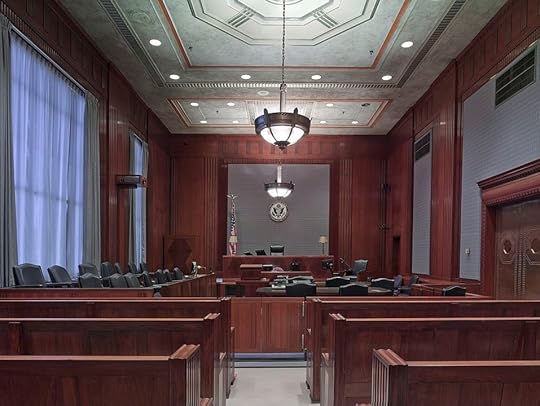 Courtroom by David Mark. CC0 Public Domain via Pixabay.
Courtroom by David Mark. CC0 Public Domain via Pixabay.Here are the major scientific deficiencies of bitemark identification expert evidence:
Source. Adult dentition consists of 32 teeth, each with 5 anatomic surfaces, creating 160 dental surfaces that could contain identifying characteristics. But a typical crime scene bitemark offers only a fraction of that information – only 4 to 8 teeth are involved in biting. Compared to other types of forensic evidence, less information is available to work with.
Substrate. Bitemarks typically occur during struggles, where skin is stretched and contorted. When the skin returns to its normal shape, the impression of the biter’s dentition is distorted to an unknown extent. Even without such distortion, skin is a poor substrate for registration of tooth impressions.
Methods of Comparison. When a forensic dentist compares a bitemark with a suspect’s dentition, numerous techniques may be used, including drawing images by hand. “The issue of the multiple methods of bitemark analysis continues to thwart any attempts to standardize procedures to any sort of ‘gold standard.’”
Evaluation of an Inclusion. If the decision reached by the examiner is inclusion of the suspected source, the next step is to evaluate the meaning of that inclusion. Its probativeness depends upon how many others in the population could also have produced markings that are equally similar in appearance to the crime scene marks. Virtually no data exist on the population distribution of dentition attributes.
Uniqueness. The conventional solution to the problem of assessing the meaning of an inclusion has been to assume uniqueness. If no two biters could be mistaken for each other, an inclusion would lead directly to the conclusion that the source had been found. But, as the NAS Report notes, there is “no evidence of an existing scientific basis for identifying an individual to the exclusion of all others.”
Examiner Reliability. The American Board of Forensic Odontology recently conducted a reliability study of the judgments of experienced, board-certified forensic dentists making basic decisions about bitemarks. The researchers selected 100 photographs of suspected bitemark injuries from actual cases. These were examined by 38 ABFO-certified odontologists. The examiners were asked three questions about each of the 100 injuries. (1) Is the injury a bitemark? (2) Is it a human bitemark? (3) Does the bite mark have distinctive features to enable individualization? No one can know which answers were correct; all we can know is the extent to which examiners agreed or disagreed with each other. Taking all three questions together, for just under half of the cases, not even 50% of the examiners agreed on the same trio of responses. For only 14 of the 100 cases did at least 80% of the examiners agree on the trio of responses. If there is little agreement (low reliability) among examiners, there can be little validity in their judgments.
Examiner Accuracy. Over approximately four decades in which forensic dentists have been testifying and claiming the ability to identify the individuals who inflicted bitemarks, only a handful of studies were carried out to assess their accuracy. Those tests presented practitioners with “questioned” bitemarks that are placed in materials that are more stable than living human flesh. The task is to try to match questioned bitemarks to a possible source (a bitemark lineup). Error rates in these studies are unimpressive and sometimes dreadful.
Lack of Standards. No standard exists for the type, quality, and number of characteristics required to conclude when a bitemark has reached a threshold of evidentiary value. In comparing images of questioned and known bites, examiners are left to their own subjective judgment.
Under existing law, it is hard to understand how forensic bitemark expert evidence continues to be admissible in court. The probability that it soon will be excluded seems to be increasing rapidly.
Featured image credit: Barbed Wire by Erika Wittlieb. CC0 Public Domain via Pixabay.
The post Why is forensic bitemark identification likely to be abolished as a form of trial evidence? appeared first on OUPblog.

December 12, 2016
Dark matter, black holes, and dwarf spheroidal galaxies
Our current understanding of the Universe suggests that it is composed of an invisible component called “dark matter“. This mysterious type of matter represents more than 25% of the entire matter and energy of which the Universe is made. The matter that we are used to “seeing” in our everyday life and that represents the building blocks for both our bodies and stars that shine in the sky, represents only 5% of the Universe. We call this “ordinary” or “baryonic” matter.
The fundamental law that regulates the interaction between bodies, composed of either dark matter or baryonic matter, is gravity. Roughly speaking, gravity keeps celestial bodies – such as the moon and the Earth – bounded together. Similarly, stellar systems can be composed of tens of stars, held together by gravitational pull. “Stellar clusters” are larger, with hundreds to a few millions of stars and “galaxies” are those having billions to thousands of billion stars. Our galaxy, the Milky Way, is a “spiral” galaxy weighing about 1012 times the mass of our Sun.
Although such a quantity seems to be definitively huge, observations made clear since the 1930s suggest that galaxies contain much more mass than is actually visible. Practically, two possible methods for evaluating the mass of a stellar system are either looking at the velocity of its stars, or looking at the total amount of light that it emits. Comparing these two quantities made clear in the majority of observations that the former method gives systematically higher mass values. This leads to the accepted picture that galaxies are embedded in large halos of dark matter. More importantly, dark matter distributes in a very characteristic way, having densities that steeply rises toward the centre of the halo. In particular, decreasing by a half the distance to the centre, the density increases twice.
Our own galaxy, the Milky Way, is likely to be contained within its dark matter halo. Interestingly, its neighbourhood is populated by a number of smaller galaxies, called “dwarf spheroidals“, which have masses of a few hundred million solar masses and orbits around it. These small galaxies are characterised by a very high fraction of dark matter, although they are much smaller than the Milky Way by a factor 10,000.
Even more interestingly, in these systems, the dark matter density seems to rise toward their centre following a more gentle trend. This represents a problem in cosmology called “the core/cusp problem”, as the standard theory predicts a general trend that is not observed in dwarf spheroidals.
Moreover, these galaxies do not host massive black holes at their centre, which occupy the majority of the nuclei of galaxies with masses above one million solar masses.
Our own galaxy, the Milky Way, is likely to be contained within its dark matter halo. Interestingly, its neighbourhood is populated by a number of smaller galaxies, called “dwarf spheroidals”, which have masses of a few hundred million solar masses and orbits around it.
In our work, we propose a mechanism that explains both the absence of massive black holes and the strange behaviour of dark matter distribution. Our theory relies upon the fact that nearly all the observed galaxies contain stellar systems, agglomerate of stars that may be composed of a few thousand up to a few million stars called star clusters. Star clusters move within the galaxy, interacting with the stars and the dark matter that compose the galaxy background. The sum of all the interactions causes a drift of their orbit, driving them toward the centre of the galaxy following a spiral pathway. At the same time, during the cluster orbital decay, its shape warps due to the same interactions.
The time over which orbital decay and the cluster warp takes place depends on the cluster mass, initial orbit, and initial velocity – but to give a general idea, we can state that, at fixed mass, the larger the initial orbit, the longer the decay time-scale.
It is a race against the clock, since the cluster can either be completely disrupted before accomplishing its orbital decay or it can reach the centre and settle there, leading to the formation of a very dense nucleus.
However, if they are sufficiently massive, these clusters influence the galactic nucleus, comprised of stars and dark matter, forcing it to re-arrange its configuration and leading to a much shallower density distribution.
Our results show that the star clusters undergo significant disruption due to the interaction with stars and dark matter that compose the galaxy. After a few Gyr, the star clusters are completely disrupted but, interestingly, they significantly changed the galaxy matter distribution. Indeed, during their disruption they cause the galaxy response that leads its total (stellar + dark matter) density to get shallower, leading also to a significant decrease in the galaxy central density.
 NGC 147, a dwarf spheroidal galaxy of the Local Group by Ole Nielsen. CC BY-SA 2.5 via Wikimedia Commons.
NGC 147, a dwarf spheroidal galaxy of the Local Group by Ole Nielsen. CC BY-SA 2.5 via Wikimedia Commons.This represents a complementary theory related to dwarf spheroidal galaxies, along with the possible contribution given by supernovae events to the nucleus structure or a possible modification of the classical theory of gravity.
How does this relate to massive black hole formation? It is widely thought that massive black holes form in the early life of a galaxy. One of the debated channels involve multiple collisions of stars, which drive the formation of a very massive star that possibly collapses to a black hole with masses of around 100-1000 solar masses and then rapidly grows by swallowing surrounding gas and stars, reaching the values currently observed (from few million to several billion solar masses).
What drives such a runaway process is the density of the nucleus, where stellar collisions start. The density decrease observed in our simulations make extremely unlikely the possible starting of the massive black hole seed formation phase, giving a quite general explanation of the causes of the lack of massive black holes in dwarf spheroidals.
Hence, our work proposes a four-step mechanism that occurs in the very early life of the dwarf, which can be summarised as follows:
The dwarf spheroidal forms with a steep density profile and some star clusters form following the overall galactic distribution;
Due to gravitational interactions between stars and the clusters, the latter moving on inner orbits are efficiently disrupted, while those moving in the galactic outskirt are almost untouched;
During their infall, clusters exert on the galactic nucleus a force, which causes its readjustment. In consequence of this, the resulting nucleus is much less dense than its initial configuration, possibly obstaculating the formation of a massive black hole seed;
Clusters moving on the outer orbits undergo orbital decay and eventually reach the galactic centre, driving the formation of a bright nucleus.
Featured image credit: Galaxy. CCO Public Domain via Pixabay.
The post Dark matter, black holes, and dwarf spheroidal galaxies appeared first on OUPblog.

Christmas with the Little Women
With Christmas in less than two weeks, there is no better way to get in the holiday spirit than by revisiting one of our favorite Christmas scenes from classic literature. The following excerpt from Louisa May Alcott’s Little Women depicts the newly impoverished March family experiencing a frugal Christmas. The recent loss of their family fortune inspires the March sisters to learn how to appreciate the little things in life, make sacrifices for people in need, and resolve to become better people. No matter which March sister you’re most like, we hope this excerpt inspires you to follow the March family’s lead in spreading Christmas cheer through the priceless gifts of selflessness and kindness this holiday season!
Jo was the first to wake in the gray dawn of Christmas morning. No stockings hung at the fireplace, and for a moment she felt as much disappointed as she did long ago, when her little sock fell down because it was so crammed with goodies. Then she remembered her mother’s promise, and slipping her hand under her pillow, drew out a little crimson-covered book. She knew it very well, for it was that beautiful old story of the best life ever lived, and Jo felt that it was a true guide-book for any pilgrim going the long journey. She woke Meg with a ‘Merry Christmas,’ and bade her see what was under her pillow. A green-covered book appeared, with the same picture inside, and a few words written by their mother, which made their one present very precious in their eyes. Presently Beth and Amy woke, to rummage and find their little books also,—one dove-colored, the other blue; and all sat looking at and talking about them, while the East grew rosy with the coming day.
In spite of her small vanities, Margaret had a sweet and pious nature, which unconsciously influenced her sisters, especially Jo, who loved her very tenderly, and obeyed her because her advice was so gently given.
‘Girls,’ said Meg, seriously, looking from the tumbled head beside her to the two little night-capped ones in the room beyond, ‘mother wants us to read and love and mind these books, and we must begin at once. We used to be faithful about it; but since father went away, and all this war trouble unsettled us, we have neglected many things. You can do as you please; but I shall keep my book on the table here, and read a little every morning as soon as I wake, for I know it will do me good, and help me through the day.’
Then she opened her new book and began to read. Jo put her arm round her, and, leaning cheek to cheek, read also, with the quiet expression so seldom seen on her restless face.
‘How good Meg is! Come, Amy, let’s do as they do. I’ll help you with the hard words, and they’ll explain things if we don’t understand,’ whispered Beth, very much impressed by the pretty books and her sisters’ example.
‘I’m glad mine is blue,’ said Amy; and then the rooms were very still while the pages were softly turned, and the winter sun-shine crept in to touch the bright heads and serious faces with a Christmas greeting.
‘Where is mother?’ asked Meg, as she and Jo ran down to thank her for their gifts, half an hour later.
‘Goodness only knows. Some poor creeter come a-beggin’, and your ma went straight off to see what was needed. There never was such a woman for givin’ away vittles and drink, clothes and firin’,’ replied Hannah, who had lived with the family since Meg was born, and was considered by them all more as a friend than a servant.
‘She will be back soon, I guess; so do your cakes, and have everything ready,’ said Meg, looking over the presents which were collected in a basket and kept under the sofa, ready to be produced at the proper time. ‘Why, where is Amy’s bottle of Cologne?’ she added, as the little flask did not appear.
‘She took it out a minute ago, and went off with it to put a ribbon on it, or some such notion,’ replied Jo, dancing about the room to take the first stiffness off the new army-slippers.
‘How nice my handkerchiefs look, don’t they? Hannah washed and ironed them for me, and I marked them all myself,’ said Beth, looking proudly at the somewhat uneven letters which had cost her such labor.
‘Bless the child, she’s gone and put “Mother” on them instead of “M. March;” how funny!’ cried Jo, taking up one.
‘Isn’t it right? I thought it was better to do it so, because Meg’s initials are “M. M.,” and I don’t want any one to use these but Marmee,’ said Beth, looking troubled.
‘It’s all right, dear, and a very pretty idea; quite sensible, too, for no one can ever mistake now. It will please her very much, I know,’ said Meg, with a frown for Jo, and a smile for Beth.
‘There’s mother; hide the basket, quick!’ cried Jo, as a door slammed, and steps sounded in the hall.
Amy carne in hastily, and looked rather abashed when she saw her sisters all waiting for her.
‘Where have you been, and what are you hiding behind you?’ asked Meg, surprised to see, by her hood and cloak, that lazy Amy had been out so early.
‘Don’t laugh at me, Jo, I didn’t mean any one should know till the time came. I only meant to change the little bottle for a big one, and I gave all my money to get it, and I’m truly trying not to be selfish any more.’
As she spoke, Amy showed the handsome flask which replaced the cheap one; and looked so earnest and humble in her little effort to forget herself, that Meg hugged her on the spot, and Jo pronounced her ‘a trump; while Beth ran to the window, and picked her finest rose to ornament the stately bottle.
‘You see I felt ashamed of my present, after reading and talking about being good this morning, so I ran round the comer and changed it the minute I was up; and I’m so glad, for mine is the handsomest now.’
Another bang of the street-door sent the basket under the sofa, and the girls to the table eager for breakfast.
‘Merry Christmas, Marmee! Lots of them! Thank you for our books; we read some, and mean to every day,’ they cried, in chorus.
‘Merry Christmas, little daughters! I’m glad you began at once, and hope you will keep on. But I want to say one word before we sit down. Not far away from here lies a poor woman with a little newborn baby. Six children are huddled into one bed to keep from freezing, for they have no fire. There is nothing to eat over there; and the oldest boy came to tell me they were suffering hunger and cold. My girls, will you give them your breakfast as a Christmas present?’
They were all unusually hungry, having waited nearly an hour, and for a minute no one spoke; only a minute, for Jo exclaimed impetuously,—
‘I’m so glad you came before we began!’
‘May I go and help carry the things to the poor little children?’ asked Beth, eagerly.
‘I shall take the cream and the muffins,’ added Amy, heroically giving up the articles she most liked.
Meg was already covering the buckwheats, and piling the bread into one big plate.
‘I thought you’d do it,’ said Mrs March, smiling as if satisfied. ‘You shall all go and help me, and when we come back we will have bread and milk for breakfast, and make it up at dinner-time.’
They were soon ready, and the procession set out. Fortunately it was early, and they went through back streets, so few people saw them, and no one laughed at the funny party.
A poor, bare, miserable room it was, with broken windows, no fire, ragged bed-clothes, a sick mother, walling baby, and a group of pale, hungry children cuddled under one old quilt, trying to keep warm. How the big eyes stared, and the blue lips smiled, as the girls went in!
‘Ach, mein Gott! it is good angels come to us!’ cried the poor woman, crying for joy.
Featured image: Christmas by stevewebb1, Public Domain via Pixabay
The post Christmas with the Little Women appeared first on OUPblog.

W. J. M. Mackenzie Book Award winners – part 2
Following the announcement that this year’s W. J. M. Mackenzie Book Award winner was A Government that Worked Better and Cost Less?, we are celebrating the achievement of Christopher Hood and Ruth Wilson, and taking the opportunity to revisit the work of our existing winners.
Oxford University Press celebrated its first win of the W. J. M. Mackenzie Book Award in 1988, and have gone on to win the award 16 times. Part 1 looked at the recent winners from the past 10 years; now we will look back to our winners from 1988 to 2004.
The Nature of Political Theory by Andrew Vincent 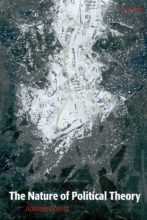
2004: Winner
As controversial as it is comprehensive, Vincent offers a comparative analysis of the major conceptions of political theory across the twentieth century. The book does not shy from challenging established views of contemporary political theory and offers critical perspectives on the future of the subject. The book opens with a fundamental question; what do we think we are doing when we practice political theory?
Designing Europe: Comparative Lessons from the Federal Experience by David McKay 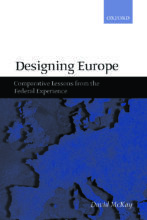
2001: Winner
McKay examines the policy dynamics of the European Union following the adoption of a single currency in 1999. The volume explores existing federations, drawing conclusions from territorial politics in the United states and fiscal dependence in Australia, whilst considering the principles of ‘Stateness,’ federalism and institutional adaptation. Will any of the ingredients ascertained make it into the recipe of Europe?
The Art of the State: Culture, Rhetoric, and Public Management by Christopher Hood 
1998: Winner
Why does public management – the art of the state – so often go wrong, producing failure and fiasco instead of reliable public service? This study by a leading star in the field offers a dynamic perspective on public management. Utilising contemporary and historical experiences alongside cultural theory, Hood establishes a recurring variety of ideas about how to organise public services efficiently and effectively.
The History of Government from Earliest Times by S. E. Finer 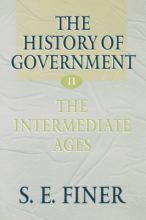
1997: Winner
This remarkable survey and analysis of government is planetary and millennial in its reach and scope. A breath-taking tour-de-force, this invaluable reference work traverses 5000 years of our political history, from the Sumerian city state and the Byzantine Empire to the modern European nation. Five core themes emerge from this imaginative and impressive undertaking; state-building, military formats, belief systems, social stratification, and timespan.
The Gorbachev Factor by Archie Brown 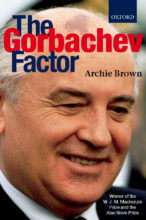
1996: Winner
What kind of man made possible such a massive transformation to his country, to Europe, to the World? To understand Mikhail Gorbachev, look no further than this astute and lucid book which answers this question in fascinating detail. Brown begins with a look at the start of Gorbachev’s career.
Justice as Impartiality, Vol. II of A Treatise on Social Justice – SDP by Brian Barry 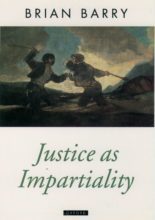
1995: winner
Almost every country today contains a plethora of religions and different secular conceptions of the good life; is there an alternative to a power struggle among them, culminating with civil war or repression? In this important work of political philosophy, Barry outlines offers a contemporary restatement of the Enlightenment idea that certain basic principles can validly claim the allegiance of every reasonable human being.
The Birth, Life and Death of the British Social Democratic Party by Ivor Crewe and Anthony King 
1995: winner
This book, based on unprecedented access to the SDP’s archive and extensive interviews with all the leading players, chronicles the party’s short but turbulent history and analyses in detail the reasons for its early success and its ultimate demise. A gripping story, told for the very first time.
Industrial Relations and European State Traditions by Colin Crouch 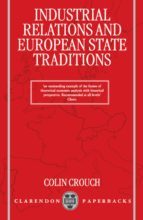
1993: Winner
Colin Crouch presents a wide ranging survey of the relationship between trade unions, employers, and governments in Western Europe. Employing rigorous economic and historical analysis, he presents powerful explanations of the diversity and significance of industrial relations in the twentieth century.
The Politics of Partition: King Abdullah, the Zionists, and Palestine 1921 – 1951 by Avi Shlaim 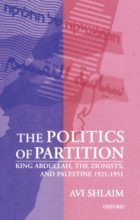
1988: winner
An authoritative and critically acclaimed book which chronicles King Abdullah’s relationship with the Zionist movement, from his appointment as Emir of Transjordan in 1921, to his assassination in 1951. Shlaim challenges the myths and legends which have surrounded the first Arab-Israeli war and the creation of the state of Israel.
Featured image credit: University books library by PactoVisual. Public Domain via Pixabay
The post W. J. M. Mackenzie Book Award winners – part 2 appeared first on OUPblog.

Pipelines and persistent objection: Indigenous rights in Justin Trudeau’s Canada
In recent weeks, relations between indigenous groups and the Canadian government have soured further over the Trans Mountain Extension Project – the controversial proposal for extending oil pipelines in British Colombia and Alberta. This proposal, and other similar pipeline proposals, has led to a notable unification of indigenous groups in opposition. The ‘pipelines dispute’ between the government and a large section of its indigenous population has been rumbling on throughout the first year of Justin Trudeau’s leadership, but it intensified significantly at the start of November.
In general terms, it is fair to say that Canada has a chequered record in relation to implementing indigenous rights. Not only that, it has also traditionally failed adequately to recognise that they exist at all. Canada has long been incredibly cautious about accepting binding international legal obligations concerning indigenous peoples. Canada was, for example, famously one of only four states (along with the other likely suspects: Australia, New Zealand and the US) to vote against the UN Declaration on the Rights of Indigenous Peoples (UNDRIP) in 2007. 143 states voted in favour of it.
The UNDRIP in itself is non-binding, of course, but increasingly–even since the 1990s–it’s been claimed, for example by the International Law Association’s Committee on the Rights of Indigenous Peoples in its 2012 Sofia report, that many new indigenous rights have attained the status of binding customary international law (albeit that this probably can only be said for some, not all, of the UNDRIP’s provisions).
 “Bakken / Dakota Access Oil Pipeline” by Tony Webster. CC BY-SA 2.0 via Flickr.
“Bakken / Dakota Access Oil Pipeline” by Tony Webster. CC BY-SA 2.0 via Flickr.However, the four dissenting states have long persistently and consistently rejected the idea that there are any binding indigenous rights in custom. As such, they’ve been able to make the case that they’re ‘persistent objectors’ to the customary indigenous rights that have developed. In other words, based on its repeated objections before these rights became binding, Canada was able to claim that it had carved out a legal exemption to them.
That was, perhaps, until 2010, when Canada endorsed the UNDRIP and the standards contained within it. On the face of it, this looked like a reversal of its previous objector stance. However, on closer inspection, this wasn’t the U-turn that it appeared to be. Canada may have endorsed the declaration in 2010, but it did so extremely tentatively and made it very clear that it still saw it as merely aspirational. So the bunting had to be packed away: Canada apparently still was an exempt objector after all. Then, a year ago, Trudeau was elected. It took the Grits a few months, but in May this year the new Indigenous Affairs Minister, Carolyn Bennett, announced that Canada was formally adopting the UNDRIP, and that in so doing it was removing what she called its “permanent objector status.” Understandably, champions of indigenous rights around the world (and especially in Canada) rejoiced.
But, then, it became clear that it wasn’t going to be that simple. The grand gesture of adopting the Declaration was one thing, but realisations over the practical reality of actually having to implement it soon had the Canadian government backtracking. For example, in July, Justice Minister Jody Wilson-Raybould didn’t try to soften the blow when she said that incorporating its provisions into domestic law simply would be “unworkable.”
The implications of this latest U-turn on indigenous rights have come to a head, substantively, with the pipelines dispute. At the start of November Canada indicated that it feels that, while it needs to consult the native population regarding the pipelines, it doesn’t need indigenous approval to proceed with them. In response, indigenous leaders pointed out that UNDRIP Article 32(2)–a provision that is almost certainly also binding in custom, as was strongly implied in paragraph 213 of the 2011 Grand River arbitration final award–requires not just consultation but consent. Moreover, indigenous leaders also have stressed that they have not been meaningfully consulted either.
The question is thus no longer about the applicability of the law to Canada; it is about whether or not Canada itself applies the standards that it is legally required to apply.
Are we, then, to think that Canada has made yet another volte face on indigenous rights, returning to its previous persistent objector position? Do we have to pack away the bunting a second time? Well, at least legally, no. If a state wants to keep the exempt status that it has gained through persistent objection, that objection must be maintained consistently. If the state acts inconsistently–by, say, formally adopting a UN Declaration that contains the relevant customary norm in question, as well as explicitly saying that this means that it is no longer a persistent objector–then exempt status is lost. State practice shows us that manifestly inconsistent behaviour is terminal for a persistent objector claim. There’s no going back. Canada is now bound by the provisions of the UNDRIP that have become binding in custom just like everybody else (well, nearly everybody else–the US, for one, is still holding out as a persistent objector).
The question is thus no longer about the applicability of the law to Canada; it is about whether or not Canada itself applies the standards that it is legally required to apply. This fact is far reaching in terms of its implications for the implementation of indigenous rights in Canada, but, right now, it translates into a requirement for consent on the part of the populations that would be affected by the proposed pipelines.
Featured image credit:”Trudeau_bellegarde” by Renegade98. CC BY-SA 2.0 via Flickr.
The post Pipelines and persistent objection: Indigenous rights in Justin Trudeau’s Canada appeared first on OUPblog.

December 11, 2016
Sixteen symbolic acres: the rebuilding of Ground Zero
The following is an excerpt from Power at Ground Zero: Politics, Money, and the Remaking of Lower Manhattan
On September 21, 2006, Governor George E. Pataki of New York and Governor Jon S. Corzine of New Jersey with New York City Mayor Michael R. Bloomberg gathered at Ground Zero for a hastily-called celebratory news conference to announce that the Board of Directors of the Port Authority of New York and New Jersey had approved a series of agreements expected to “expedite the redevelopment process.” “The time has come to build this,” said the Port Authority’s chairman, Anthony R. Coscia. The agreements set forth the most definitive blueprint to date after years of conflict and contention over every piece of the master plan for rebuilding the sixteen acres at Ground Zero. The moment marked a watershed. The process of getting to this point had not been easy. It followed months of negotiations among the three government stakeholders and real estate developer Larry Silverstein, acting as general manager of his investment partnership’s ninety-nine-year lease on the Trade Center site—still a “hole”—negotiations that could only be described as difficult, disputatious, and at times ugly. Money was the fundamental sticking point. The “Global Realignment,” as the new deal was called, redefined who would build what on the site, dividing control over the development rights for the commercial program between Silverstein and the Port Authority, owner of the land on which the Trade Center complex had been built in the 1960s. Silverstein’s role was reduced to building three of the five planned towers, though he emerged with the three best development sites from a real estate perspective. The Port Authority would build the Freedom Tower, an uneconomical political statement promoted by Pataki, as well as a fifth office tower and the retail component of the plan. The bi-state agency remained responsible for building out the complex underground infrastructure, which had to be accomplished before construction could start on any other part of the rebuild, including the Memorial and Memorial Museum. Just six weeks before the 9/11 attack, the Port Authority had sold a long-term interest in the Trade Center complex to Silverstein in a much heralded historic transaction that transferred ownership the iconic complex to private investors. With the 2006 deal, the Port Authority was back in the real estate business. From the First day forward after 9/11, the words used by all stakeholders to describe the rebuilding effort were framed in patriotic meaning and heart-felt commitment to the losses of 9/11—words that spoke to its symbolic mandates.
The driving forces at work in rebuilding Ground Zero— civic purpose, political opportunity, and commercial gain—mirrored both the optimism of recovery and the rough-and-tumble politics of power in New York City. These forces would define the constellation of issues swirling about the site for many more years to come until visible progress above ground began to give shape to a new district in lower Manhattan. The realignments of the 2006 deal created modest confidence in the task of rebuilding among the stakeholders standing in the open air around the podium on a blue-skies day whose clarity was all too reminiscent of the day two hijacked planes rammed into the twin towers. On both sides scars remained. And wariness. The difficulties in coming to terms on these agreements did not stop with the board vote but continued for ninety minutes afterward, with both parties engaging in “last-minute wrangling,” according to the Times. The announcement of the news conference just minutes before it started gave the press little time to get there. This “semi-secret” aspect of the event turned out to be a portent of rough times ahead, as relations between the public agency developer and the private-sector developer of Ground Zero remained strained by lack of trust and a misalignment of interests.
Several years of high-profile debates about architectural vision and fierce battles between dueling designers had galvanized public attention. These were now settled. The program for memorializing the losses of 9/11 was in place. The actual work of rebuilding lay ahead, in the complicated challenge of figuring out how to turn ambitious vision into tangible reality. The stakes of succeeding were of psychological as well as economic importance to the city at large and its region and the country.
After the big design decisions had been made, it seemed possible to conclude that the task of executing on the plans was not press-worthy—that is, not much different from a conventional, albeit, large development project—until controversy threatened to reopen those already-made decisions or propelled elected officials into outrage and open conflict. Though seemingly mundane and less newsworthy, the task of reconciling aspirations with economic reality was paramount. It impacted everything at Ground Zero: how the 9/11 memorial would be experienced and how the Trade Center site would interface with the urban fabric of adjacent neighborhoods. It would shape the experience of commuters and shoppers traveling through the transportation Hub. Most critically from the perspective of state and local officials, it would determine when the new towers at Ground Zero would repopulate the skyline of lower Manhattan and with what level of public financial support to assure that they do. In short, for years a lot was happening to shape decisions at Ground Zero that often did not make head- line news and that most people could not learn about.
As the saga of rebuilding unfolded, it seemed to become a New York story, a New York project, and a New York memorial.
However, as evident on 9/11 and in the theater of geopolitical events thereafter, the terrorist attack was a profoundly violent assault n the United States as a capitalist society and on Western cultural, social, and economic values. As witnessed by millions in real time on television, the destruction of the World Trade Center sent shock waves around the world. It became the most memorable moment shared by television viewers during the last fifty years, according to a 2012 study by Sony electronics and the Nielsen television research company that ranked TV moments for their impact. The at- tack connected global audiences in ways most natural disasters do not: It was not the typical type of damage—poorly built structures, poorly capitalized operations, underinsured, individuals with few means—but rather a high-density, high-profile, heavily insured symbol of Western capitalism. The unprecedented drama of physical destruction and emotional trauma besetting the families of the victims and citizens of New York City touched populations at-large in nations across the globe, creating empathy and interest in rebuilding. The nearly three thousand 9/11 victims were of many nationalities. The twin towers were a touchstone icon for millions of tourists visiting New York. Rebuilding in response to that violent provocation holds meaning beyond those sixteen acres in lower Manhattan. For what it symbolizes, the story of rebuilding Ground Zero is a story of global significance.
Because it is a story of global significance, rebuilding has had to meet many symbolic aspirations. It needed to embody American values and speak to the world about America’s resilience in the face of mass murder that at least in Western eyes was senseless. Simultaneously, the effort had to show that local decision makers could “do the right thing” as the world watched. It had to represent strength and determination and reflect deep sensitivity in recognition of the lives lost in the attacks. It had to create an economic future for lower Manhattan. And it had to protect New York City’s status as “the capital of the free world” and assure its global leadership in the twenty-first century. That was what the mayor promised in his inaugural address on January 1, 2002, and throughout his twelve years in office; Michael R. Bloomberg would try to act in full accord with what he promised: “We will go forward. We will never go back.”
Within the historical context of New York City’s economic trajectory, rebuilding Ground Zero was fraught with strategic consequence. Just as the original Trade Center complex represented the culmination of a decades-long series of efforts aimed at revitalizing the city’s founding center of business, forty years later rebuilding those sixteen acres reprised history—with new meaning, in a new century, in a new geopolitical context brought forth by 9/11. The total destruction of the massive Trade Center complex created a rare opportunity for New York City to rethink its long-term economic needs, at least in the down- town area. With President George W. Bush’s promise of $20 billion of federal resources, those with responsibility for Ground Zero and beyond might be able to take bold actions to rebuild all of lower Manhattan, while sending a message to the world that regardless of whatever Al-Qaeda terrorists aimed to do, New York City would come back stronger than ever. It was an unparalleled opportunity in the city’s history.
Opportunity quickened the pulse of ambition. All of the central players at Ground Zero harbored vaulting ambitions, especially Governor George E. Pataki who envisioned Ground Zero as a platform for his higher political aspirations. Ambition suffused every vision, threaded through every conflict, and shaped the scale of every achievement in the rebuilding of these sixteen acres in lower Manhattan. To rebuild in defiance of the terrorists, to assure New York’s position as a global city, to rebuild the economic engine of lower Manhattan, to think big, plan right in a democratic fashion, and move quickly—these aims became drivers of decisions of how New York City rebuilt at Ground Zero.
There were more tangible ambitions as well, and they seemed to grow as the opportunity to rebuild brought forth aspirations long-held and newly-minted: the desire to build a project that demonstrated planners had learned from experience at the original Trade Center complex and could design and execute a better way to use those sixteen acres; the desire to link transportation with development more effectively and enhance the accessibility of lower Manhattan; the desire to build a monumental gateway for commuters; the idea of adding new social and cultural functions that would help the long-term revival of lower Manhattan; the imperative of creating a place more secure from terrorist at- tacks; the desire to integrate the complex into the fabric of the city, especially the adjacent neighborhood of Battery Park City.
Featured image credit: Freedom Tower by avflores. CC0 public domain via Pixabay.
The post Sixteen symbolic acres: the rebuilding of Ground Zero appeared first on OUPblog.

World nuclear forces: who has what?
Since the atomic bombings of Hiroshima and Nagasaki, nuclear weapons have been detonated on over two thousand occasions for the purposes of testing and demonstration. With world events more uncertain than ever before, an in-depth look at nations’ nuclear capabilities (and intentions) is crucial to security services and diplomats all over the world. At the start of 2016, nine states — the US, Russia, the UK, France, China, India, Pakistan, Israel, and the Democratic People’s Republic of Korea — possessed approximately 15,395 nuclear weapons. Overall inventories of nuclear warheads are declining (primarily due to the USA and Russia reducing their holdings), but the global pace of reductions is slowing.
Although they are decreasing in terms of quantity, both the USA and Russia have extensive modernization programmes under way. The nuclear arsenals of the other seven states are considerably smaller, but all plan to develop new weapon systems. China (like Russia and the USA) has embarked on long-term upgrades, whilst India and Pakistan are both expanding their nuclear weapon stockpiles. Israel, which neither officially confirms nor denies that it possesses nuclear weapons, is testing a long-range nuclear-capable ballistic missile, and North Korea continues to prioritize its military nuclear programme.
Discover more about the nine nuclear states’ stockpiles and policies, with this interactive map.
Featured Image Credit: Hydrogen Bomb, Atomic Bomb by WikiImages. Public Domain via Pixabay.
The post World nuclear forces: who has what? appeared first on OUPblog.

Oxford University Press's Blog
- Oxford University Press's profile
- 238 followers



